11 Best first-time Europe itineraries for 1, 2, or 3 weeks
Europe is going to be very busy in the summer of 2024 as the world is back to normal and travel demand is higher than ever. One other key factor is that most European currencies are still hovering at lower levels historically compared to the US dollar, which means that Europe will feel somewhat cheap again this year. In fact, according to our World Backpacker Index, European cities like Lisbon, Madrid, and Munich are about 30% cheaper to visit than Boston, Chicago, and New York City. In other words, flying to Europe might seem expensive, but most things will be cheaper once you get there compared to the costs of visiting a large US city.
Below you’ll find 11 of the most popular and best itineraries for a first visit to Europe. Your first visit is not really the time to be different or creative, and the famous destinations tend to be popular for a reason. In other words, it’s kind of silly to visit, say, Bulgaria, if you’ve not yet been to France or Italy. I lay out the best options along with how long to stay in each place as a general guide. I also discuss Mediterranean cruises, which can actually be an amazing way to see a lot of Europe on your first visit, especially if you don’t like going back and forth to train stations and airports every 2 or 3 days.
For a bit of fun you might be interested in the cheapest 5-star hotels in Europe, which start at US$80 per night for really nice hotels. It helps show that if you choose some of the cheaper cities, you can treat yourself to some luxury that you can’t afford in most other places.
This article was last updated in March, 2024.
There are 11 starter itineraries described in detail below
- Classic London and Paris
- England and Scotland
- Paris and Italy
- Mediterranean cruise
- France, Belgium, and Netherlands
- Paris and elsewhere in France
- Italy
- Spain
- Germany
- Switzerland
- Best of cheap eastern Europe
For each itinerary there are suggestions of other destinations that are easy to add on to the main cities.
Note: This article was most recently updated in March, 2024
Building the best itinerary for your first trip to Europe
Below there are 11 popular itineraries for one week in Europe. If you’ve only got a week then choose one of them and assume you’ll return again to conquer more of this amazing part of the world. If you’ve got more time then you can choose from some of the top add-on suggestions for each one.
Start in the most famous cities
Your first visit to Europe is no time to try to be different or edgy. I recommend that you focus on these 5 great cities before you start branching out into cheaper or more obscure places.
Keep your travel days to a minimum
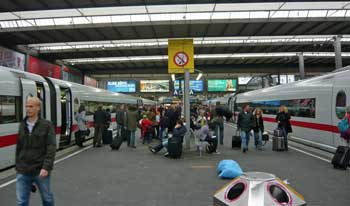
Spend 3 (or 4) nights in almost every major city
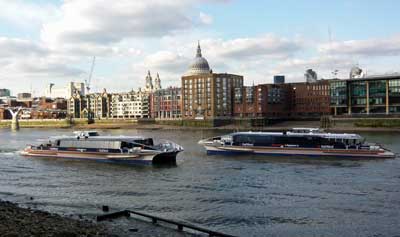
So many first-time visitors are initially planning on spending only 1 or 2 nights in major cities that I wrote a detailed explanation of why 3 nights is ideal for almost all European cities, even if you want to see as much as possible.
3 (or 4) nights will be enough for any city on your first trip
Most first-time visitors are tempted to move too quickly, but it can also be a mistake to move too slowly. It’s really amazing how much you can see in two full sightseeing days. If you spend too long in one city you’ll end up seeing things that are way down your list, while you could be in another city seeing things at the top of your list there.
Choose cities that are easy to reach from each other
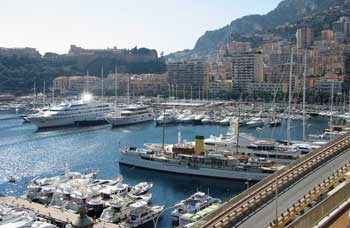
For your first trip it’s best to visit cities that are no more than a 5-hour train ride apart.
Choose cities that are connected by reasonable train rides rather than flights
To build on the point above, finding cheap flights within Europe is easy, but train travel is about a million times more enjoyable and less stressful. You’ll enjoy the train rides almost as much as the cities, so focus on places that are within 5 hours of each other by train.
Start with one of the classic itineraries below, and then add to it if you have more time
If you only have 7 days then you’ll find a list below of classic itineraries that are well-suited to a first visit to Europe. Hopefully you have more than 7 days though, and if you do you can add in one or more of the suggested add-on cities to build an itinerary that appeals most to you.
Best 1-week itineraries for the first time in Europe
Itinerary 1: Classic London and Paris
Fly into either city and take the 2-hour Eurostar train between them
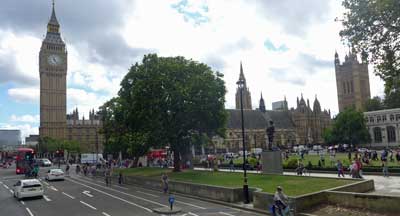
London highlights
- Big Ben and Parliament
- Westminster Abbey and St. Paul’s Cathedral
- Tower of London and Tower Bridge
- West End shows (Broadway equivalent) and classic pubs
- Buckingham Palace and Windsor Castle
Paris is actually far more beautiful than London and the food is famously much better as well. Since Paris gets so many tourists from non-French speaking countries, it’s easy to get by on just English, and the Metro system makes it fast and easy to get around. The architecture of both cities is amazing from the Tower of London, Big Ben, Westminster Abbey to the Louvre and the Eiffel Tower. These cities each pack a huge punch and they are very different from each other as well. Actually, England is arguably the best choice for your first trip to Europe.
Paris highlights
- Eiffel Tower
- Louvre Museum and Museum de Orsay
- Arc de Triomphe and other monuments
- Montmartre neighborhood and Sacré Coeur Cathedral
- Probably the world’s best affordable restaurants and wine
Best add-ons to London and Paris
- Edinburgh (2 or 3 nights, from London)
- Amsterdam (2 or 3 nights, from Paris)
- Bruges and Brussels (2 nights, from Paris)
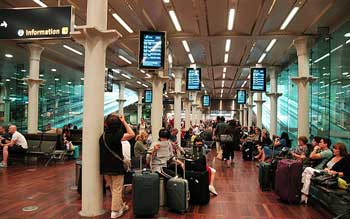
>>>Best one-week London and Paris itinerary in detail
>>>Check London hotel deals
>>>Check Paris hotel deals
Itinerary 2: England and Scotland
- London (3 or 4 nights)
- York (1 night)
- Edinburgh, Scotland (2 or 3 nights)
- Inverness, Scotland (2 or 3 nights)
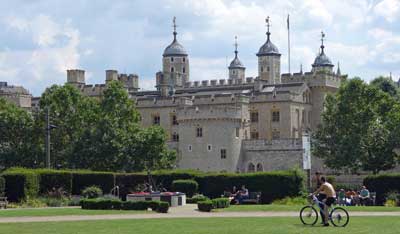
York is a small Roman city with intact city walls and one of the most famous cathedrals in Europe. Edinburgh is not only the capital of Scotland, but it’s easily the second most interesting city in all of Britain. If your time is short, skip York and spend more time in Edinburgh.
If you prefer to focus on the south of England on your first trip then the best option is to go to Bath or nearby Bristol after London. Bath is another of England’s top destinations and it’s a gorgeous city that has been a spa resort for many centuries. It’s also reasonably close to Stonehenge. You can also easily get to Cornwall in England’s southwest corner from Bath, and that’s a whole different and fascinating experience (with nicer weather than up north).
If you’ve got more than a week and want to spend more time in Scotland, especially in the summer months, the place to head to is Inverness. It’s a small town that is considered the gateway to the Scottish Highlands, but it’s an interesting and charming place on its own. You can take day-trips by bus to the highlights of the Highlands including the Isle of Skye and Loch Ness. Between you and me, it’s better to minimize time in Loch Ness or skip it altogether because it’s not one of the more photogenic parts of Scotland and the monster has always been a hoax.
Travel times between the recommended places
- London to York by train: 2 hours
- York to Edinburgh by train: 2.5 hours
- London to Edinburgh by train: 4 hours
- Edinburgh to Inverness by train: 3.5 hours
- London to Bath by train: 85 minutes
Best add-ons to England and Scotland
If you think you want to spend your whole trip in Britain you should have a look at our article on the best itineraries in England, Scotland, and Wales.
>>>Check London hotel deals
>>>Check Edinburgh hotel deals
Itinerary 3: Paris and Italy
- Paris (3 or 4 nights)
- Venice (1 night)
- Florence (2 or 3 nights)
- Rome (3 nights)
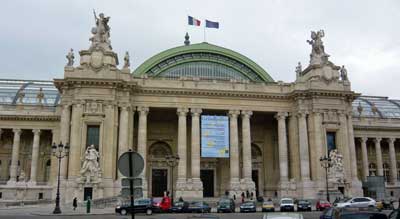
From Paris you can easily fly to Venice (or nearby Treviso) where you should try to spend about 24 hours. Venice is small enough to see in a full day, and so crowded that most people are satisfied to leave after that day. The key is to stay in the main part of the main island so you can enjoy Venice before the cruise passengers and day-trippers arrive, and also after they leave for the day. Two nights in Venice would not be wasted time, and it’s possibly the most gorgeous city in the entire world, but you can see the best of it in a bit over 24 hours.
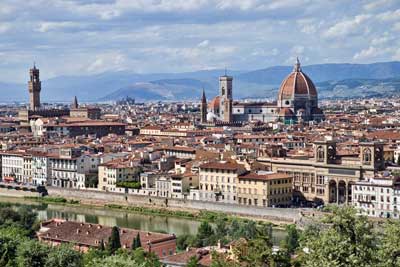
Rome also lives up to the hype and spending a day in the Vatican City will be a highlight even for non-Catholics, but it’s also a crowded and busy city so three days is usually enough for most people. Similar to Paris, Rome is an unusually beautiful city from almost any angle when you are in the historical center. You’ll walk through a stunning piazza (town square) and then turn a corner and you’ll see gorgeous buildings or public statues that are as nice as anything in the museums. Seriously, it’s worth a visit.
Paris to Venice flight: 1 hour 35 minutes
Venice to Florence by train: 1 hour 53 minutes
Florence to Rome by train: 1 hour 16 minutes
You can of course instead fly from Paris to Rome and then go north to Florence and then to Venice and fly home (or back to Paris) from there, and it would be just as enjoyable.
Best add-ons to Paris and Italy
France
- Nice/Cannes/Monaco (2 or 3 nights)
- Avignon (2 nights)
- Bourges (2 nights)
- Bordeaux (2 nights)
- Aix-en-Provence (2 nights)
- Reims (2 nights)
- Dijon/Burgundy (2 nights)
Italy
- Milan (1 or 2 nights)
- Lake Como (2 nights)
- Siena (2 nights)
- Cinque Terre (1 night)
- Naples/Sorrento/Amalfi Coast/Pompeii/Capri (3 to 5 nights)
- Sicily (3 to 4 nights)
>>>Much more information in this article about the best France and Italy itineraries
>>>Check Paris hotel deals
>>>Check Venice hotel deals
>>>Check Florence hotel deals
>>>Check Rome hotel deals
Itinerary 4: Mediterranean cruise
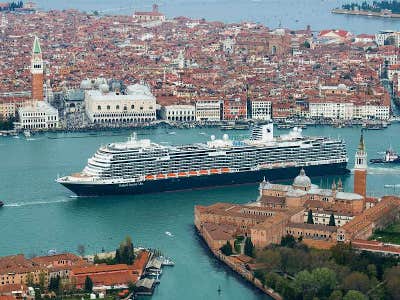
In spite of the reputation of cruises to be floating buffets, they can actually be an excellent way to visit a great number of amazing European cities in a short time. The ship typically is in port from the early morning until mid evening, often giving you the opportunity to have dinner in the city (unlike Caribbean cruises). Better still, the cruise ports are often near the center of town, so you can just walk off the ship and do sightseeing on foot or by public transportation.
Mediterranean cruises usually start at 7 nights but can go up to 3 weeks, which can provide an amazing tour of the entire region without having to pack and repack your bags more than once. They also can provide excellent value, especially compared to the price of taking trains or flights and finding new hotels in every destination.
Most popular Mediterranean departure ports
Barcelona, Spain – It’s an easy port to reach. Ships generally go from Barcelona with stops in France and then Italy.
Rome (Civitavecchia), Italy – The port isn’t very close to Rome, but it’s easy to get back and forth. Ships go west to France and Spain as well as south around the tip of Italy and then on to Croatia, Venice, and to Greece.
Venice, Italy – The cruise ships no longer dock close to the best tourist areas, but it’s easy enough to visit Venice for a day or two before boarding a ship. Ships starting in Venice go south and then head west and to Rome and then to France, or they go south to Croatia and then head east to Greece.
Athens, Greece – The cruise port of Piraeus is just south of Athens and easy to reach. Ships from Athens usually head west towards Croatia, Italy, France, and Spain, but there are also ships that visit Greek islands and Turkey.
>>>Check for deals on Mediterranean cruises
Alternative to consider: a river cruise
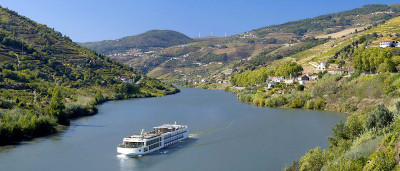
Amsterdam, Budapest, and Prague are some of the most popular river cruise ports, but there are dozens of others including many smaller towns in France where few other tourists will be when you stroll off the ship. There is little or no entertainment on the river cruise ships, but passengers don’t miss it because the entire day and into the evening is spent just steps from local cultural offerings and restaurants.
>>>Check for Europe and river cruise deals
Itinerary 5: France, Belgium, and Netherlands
Paris to Brussels: 1 hour 22 minutes
Brussels to Bruge: 58 minutes
Bruges to Amsterdam: 2 hours 45 minutes
Amsterdam to Paris: 3 hours 17 minutes
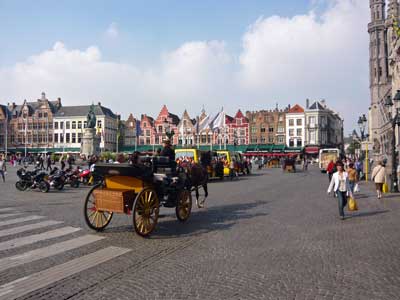
Spending 4 nights in Paris and 3 nights in Amsterdam would be a great trip, but if you want to see something else you’ve got a couple options in between. My advice is to spend an afternoon looking around the Grand Place (main square) in Brussels and then hop a 58-minute train ride to Bruges for a night or two. Brussels isn’t a great tourist city, but Bruges really is so it’s a better option for most people. Whatever you choose out of this group, you can be back in Paris on another high-speed train for your flight home.
Best add-ons to France, Belgium, and Netherlands
- Luxembourg City (1 or 2 nights)
- Cologne, Germany (1 or 2 nights)
- London (3 or 4 nights)
- Interlaken, Switzerland (2 or 3 nights)
>>>Check Paris hotel deals
>>>Check Bruges hotel deals
>>>Check Amsterdam hotel deals
Itinerary 6: Paris and elsewhere in France
- Paris (3 or 4 nights)
And a choice of:
- Nice/Cannes/Monaco (2 or 3 nights)
- Avignon (2 nights)
- Bourges (2 nights)
- Bordeaux (2 nights)
- Aix-en-Provence (2 nights)
- Reims (2 nights)
- Dijon/Burgundy (2 nights)
- Normandy (2 nights)
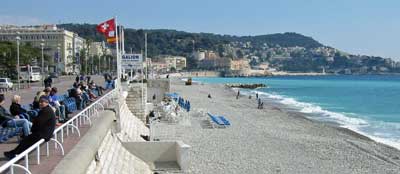
While Nice is a wonderful tourist city for a look at the French Riviera, the other larger cities of Lyon and Marseilles are probably better saved for a future trip because they are light on key sights compared to many smaller towns. Wine lovers can rent a car or take trains into Bordeaux or Burgundy. Since you can get between most of these towns by train in 2 hours or less, spending only 2 nights in each one is a reasonable option if you want to see a lot in a short time.
Normandy is an interesting choice and easy to reach in only about two hours by train from Paris. Some visitors like to see the famous WWII beaches and memorials, while others (especially in summer) like to check out one or more of the beach-resort towns. Deauville is one of the more famous of those, and it’s also famous for its horse race track and as one of the epicenters of the industry in Europe.
Best add-ons to Paris and elsewhere
- More France, of course
- London (3 or 4 nights)
- Interlaken, Switzerland (2 or 3 nights)
- Amsterdam (2 or 3 nights)
>>>Check Paris hotel deals
>>>Check Nice hotel deals
Itinerary 7: Italy
Rome to Florence: 1 hour 16 minutes
Florence to Venice: 1 hour 53 minutes
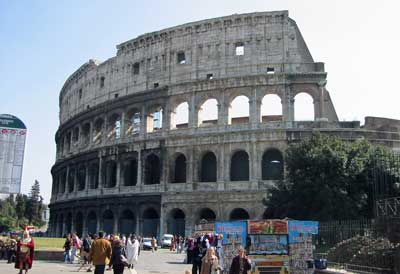
Venice is small enough that you can see the main sights in about 24 hours, and it’s so insanely crowded that many people tire of it after about a day as well. It’s better to pay more for a hotel to be on the main island and visit quickly than to save money with a hotel on the mainland where you’ll be in crowds going back and forth as well. Florence is the most relaxing of the 3, and also a great base for side trips to Pisa, Siena, and Cinque Terre, just to name a few.
Going to Italy? Here are the best first-time Italy itineraries for 3 days to 2 weeks (in much greater detail)
Best add-ons to Italy
- Milan (1 or 2 nights)
- Lake Como (2 nights)
- Siena (2 nights)
- Cinque Terre (1 night)
- Naples/Sorrento/Amalfi Coast/Pompeii/Capri (3 to 5 nights)
- Sicily (3 to 4 nights)
>>>Check Rome hotel deals
>>>Check Florence hotel deals
>>>Check Venice hotel deals
Itinerary 8: Spain
Madrid to Barcelona: 2 hours 30 minutes
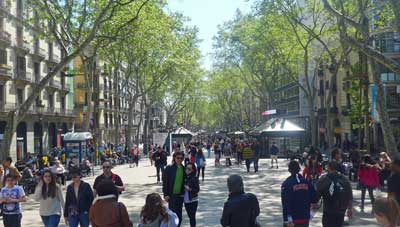
A huge part of Spain’s tourism industry is built around its southern beaches and islands such as Ibiza, Mallorca, and Tenerife (in the Canary Islands). For most people it’s best to ignore those places on your first trip because none of the beaches are special enough to spend days on them compared to the culture of the cities.
Best add-ons to Spain
By popular demand, I’ve added a full article on where to go in Spain with itineraries from 7 to 10 days up to two weeks.
>>>Check Madrid hotel deals
>>>Check Barcelona hotel deals
>>>Check Lisbon hotel deals
Itinerary 9: Germany
Berlin to Munich: 6 hours 2 minutes
Munich to Rothenburg ob der Tauber: 2 hours 56 minutes
Munich to Füssen: 2 hours 4 minutes
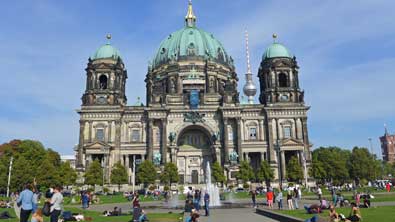
Those two cities are the keys to a Germany visit, and after that you’ve got a wide variety of choices. I cover most of the popular choices in my article on where to go in Germany, which covers several smaller towns that are major highlights.
Best add-ons to Germany
- Cologne (1 or 2 nights)
- Hamburg (2 or 3 nights)
- Amsterdam (3 nights)
- Prague (3 nights)
- Salzburg (2 or 3 nights)
- Vienna (3 nights)
- Interlaken, Switzerland (3 nights)
- Lucerne, Switzerland (2 or 3 nights)
>>>Check Berlin hotel deals
>>>Check Munich hotel deals
Itinerary 10: Switzerland
- Interlaken (3 nights)
- Bern (1 night)
- Lucerne (3 nights)
Zurich Airport to Interlaken: 2 hours 10 minutes
Interlaken to Bern: 53 minutes
Bern to Lucerne: 1 hour 50 minutes
Lucerne to Zurich Airport: 1 hour 3 minutes
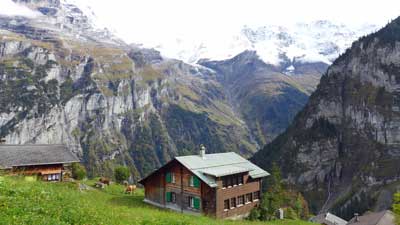
Interlaken is the best hub for the most dramatic Alps views and experiences. The one-hour cable car ride up to the Schilthorn observation deck is something you’ll never forget, and the only thing that might be more dramatic is the train ride up to the Jungfraujoch station, which is the highest in Europe. Lucerne is almost as beautiful with a scenic lake at its heart and also great mountaintop views nearby. If you do want to see a Swiss city then the capital of Bern is the most interesting and photogenic on a short visit. Read more about where to go in Switzerland for even more ideas.
Best add-ons to Switzerland
>>>Check Interlaken hotel deals
>>>Check Lucerne hotel deals
Itinerary 11: Eastern Europe’s best cheap cities
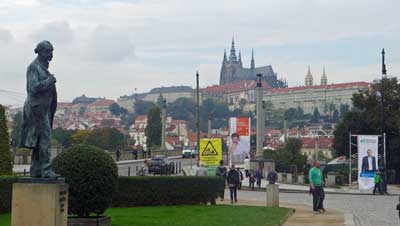
Each of these cities is beautiful and historic, but English is less widely spoken so they can also be quite a bit more challenging for a first-time visitor. Another difficulty is that the trains between them are still quite slow compared to the high-speed rail in the West, so it takes most of a day from one to another, and a bus is often a better choice. I cover this best cheap Europe itinerary more fully in the linked article.
Prague to Budapest: 6 hours 41 minutes
Budapest to Krakow: 9 hours 54 minutes (flying might be better)
Best add-ons to cheap Eastern Europe
- Cesky Krumlov, Czechia (2 nights)
- Ljubljana, Slovenia (2 or 3 nights)
- Split, Croatia (3 nights)
- Belgrade, Serbia (2 or 3 nights)
- Sarajevo, Bosnia and Herzegovina (2 or 3 nights)
- Sofia, Bulgaria (2 or 3 nights)
>>>Check Prague hotel deals
>>>Check Budapest hotel deals
>>>Check Krakow hotel deals


Hi Roger,
Your site is such a good read and so helpful! I’m glad I stumbled upon this as I’m planning to travel with my husband sometime in Apr/May 2018. He has been to London and Switzerland before but it will be my first time in any parts of Europe. Decided not to include London as we may return to do a trip to England on its own, unless we have spare days to spend in this trip. We have about 10 days. Our plan is to fly in to Rome and fly out from Paris (depending on the flight ticket prices and availability). At the moment, we have shortlisted the places we’d want to visit – Rome (3 days), Venice (1 day) and Paris (3 days). Your suggestion for the remaining days? Appreciate your advice on the order of this itinerary and how we can travel between cities (train/flight)? Also would it be worth it to get a rail pass?
Thanks for your help!
Regards,
Esther.
Esther,
It’s nice to hear great comments like this. Your plan sounds great and I agree that visiting London on another trip would be ideal.
Italy has what we in the tourism community call the “Big 3”, which are Rome, Florence, and Venice. There are some other ways you might be able to spend those extra days in France or elsewhere in Italy, but by far the easiest and I believe the most rewarding option would be to spend those 3 days in Florence. It’s the capital of Tuscany and also one of the most famous art cities in the world. The whole city is fairly compact and it feels like an outdoor museum, even more so than Rome does. Better still, Florence is only about 90 minutes by train from Rome and another two hours to Venice, so it’s nicely in between.
Florence has plenty to keep you busy for those three days, but it’s also a good launching point of a half-day trip to Pisa if that interests you. Pisa is kind of a dud aside from the Leaning Tower and cathedral next to it, but it’s also only an hour from Florence on a cheap commuter train, and you can be back in Florence in 5 or 6 hours if you like.
Your best bet is to fly into Rome and then take the high-speed trains to Florence and then to Venice. They are quite cheap in general, and even cheaper if you buy them at least a month or more in advance. Then fly from Venice (or nearby Treviso) to Paris, as the train option is both slow and expensive. Buy that plane ticket as far in advance as possible for the lowest fares and best choices of departure times. This will be the classic short visit to both Italy and France, and you can see a few other options in the article I just linked to. As always, let me know if you have any other questions. -Roger
Roger, we are planning a trip in Sept 2018 not sure of where to go. would love to see Munich, Salzburg, visit Italy and maybe the alps. We are in the early stages of planning and this will be our first trip. I would love to see beautiful places. Maybe do a bit of hiking and try amazing food. we are going for 16 days. Ay suggestions?
Thanks,
Charlotte
Charlotte,
Since you have 16 days you could do everything on your list if you don’t mind moving pretty quickly. You could do 3 nights in Munich and then take the short train ride to Salzburg for two nights. Salzburg is lovely, but it’s small enough to enjoy in two days, especially since you can be there by 11am after leaving Munich in the morning.
Salzburg is at the edge of the Alps and it’s a really gorgeous area, but the most dramatic Alpine views are in Switzerland. If you wanted to you could take a 7.5-hour train ride from Salzburg to Interlaken and spend two or three days there. You can read more about it in my main article on where to go in Switzerland. From there you can take a train down to Venice to start a little tour of Italy. Or if you didn’t want to do that long train ride you could just explore the Salzburg area more and then take a train directly to Venice. The trains between Salzburg and Interlaken or Venice all feature amazing scenery almost the whole way. In other words, even though some of the train rides are a bit long, they will be a highlight by themselves.
As for Italy I would recommend starting in Venice for one or two nights. Venice is small enough to enjoy in about 24 hours, and it’s also quite crowded and expensive so it can get old pretty quickly. That said, it’s a stunning city that I would not skip. After a night or two in Venice you can take a fast train down to Florence for 3 nights, which might include a half-day trip to Pisa if that interests you. Florence is the capital of the Tuscany region, and it’s one of Europe’s best food cities. Then take a fast train down to Rome for your last 3 nights. Rome is packed with great sights, but it’s also crowded and a bit chaotic so I think staying for 3 nights is enough.
You will have the best hiking opportunities in Salzburg and Switzerland if you decide to include it. I think this kind of trip will work very well for you. Let me know if you have any questions. -Roger
Hi Roger,
Thanks for the great site and advice. It’s been very helpful!
My fiancé and I are planning our honeymoon for September 2018. Our trip will be about 12-14 days. We are considering 5 cities and were hoping you might provide some advice on which we should definitely hit, which we can save for another trip, and in what order we should tackle them.
We’re considering: London, Paris, Edinburgh, Amsterdam, and Bruges/Brussels. For some reason, she’s a little less excited about London than I am. So maybe you can help on that front too ;).
(Full disclosure: I have spent time in Italy, and she has spent time in Germany.)
Thanks for any advice you might have!
Jordan
Jordan,
Happy to hear this helps. As you might have seen up top, my normal advice is to plan for 3 nights in each city you visit. In 12 to 14 days you should be able to do 4 cities well or 5 if you rush a bit. Edinburgh is compact enough to enjoy in two days, so that might help. Bruges and Brussels are an interesting pair. In my opinion, Brussels isn’t a great tourist city except for the historic core around the main square (Grand Place), as most of the city is geared for business travelers and bureaucrats. So I often recommend that people take an early train from Paris or Amsterdam (depending on which direction you are going) and spend maybe 4 hours in Brussels including lunch. That is enough time to enjoy the best parts, and then hop back on the train for another hour to Bruges and stay there for 2 or maybe 3 nights.
Another thing to note about Bruges is that it looks a lot like Amsterdam, as they were both rich cities that were mostly built in the same era. Bruges is much smaller and less busy and there are many subtle differences. I like the place, but it does feel like a calmer and smaller Amsterdam.
I have an article I wrote a few years ago that describes what I consider to be Europe’s 5 “great” cities for first-time visitors, and to focus on those before getting too fancy with more remote or cheaper cities. That list includes London, Paris, Amsterdam, Rome, and Venice. I’ve been to pretty much every tourist city in Europe, and I still highly recommend that London and Paris are both must-visit cities. Edinburgh is quite nice and it’s so much smaller that it has a different feeling to London, although of course there are some similarities.
You could visit them in quite a few different ways, but I think the best way with no backtracking is to fly into London and then take the train up to Edinburgh (If you book a couple months out this high-speed train can be quite cheap). Then fly to Amsterdam and then take the train south into Belgium and then on to Paris for your flight home. Or you could fly from Edinburgh to Paris and then take the trains up through Belgium to Amsterdam and fly home from there. If you have to fly in and out of the same city you could do the first version and then take the Eurostar train from Paris to London and then head to Heathrow from there. Let me know if you have any other questions. -Roger
Thanks a lot Roger for sparing time and providing your valuable suggestions. I would try to do the trip in Apr-May. As per suggestions I would like to do London-3 days,Paris-3 days,Rome-3 days,Venice-2 days,Prague-3 days,Berlin-3 days,Amsterdam-3 days,Paris-3 days,Madrid/Barcelona whatever you suggest-3 days and Interlaken-3 days.This makes almost 30 days which I can afford to get leave. NOw my request is to help me in putting them in order i.e.from Delhi where should I first land and then how to go on to other places in chronological order. Also please suggest which mode of travel will be economical and how to book tickets for that mode and from which city I should depart to Delhi. I am troubling you a lot but i am sure you will guide me properly so that I can do my bookings now itself and save money.
Hi Roger,
We are planning a 15 days trip to Europe in April 2018 with a 2 year old. We are pretty sold on Amsterdam, Rome & Venice. We have family in Frankfurt so may explore Germany for a few days. Would like your opinion on the itinerary below. The key thing for us is to stay in one location for atleast 4 nights (except Venice) and travel as much possible by train (less than 3 hrs or overnight). We are still flexible with the places we would like to visit.
1. Amsterdam – 5 nights(includes day trip to Keukenhof and Zaanse Schans)
2. Germany – 4 nights ( Not sure where. More interested in countryside and a convenient stop between Amsterdam & Venice).Family lives in Frankfurt.
3. Venice – 1 night
4. Rome – 4 nights.
Thank you.
Vijaya,
I think your plan looks quite good. As for Germany, you have quite a few good options. Have a look at my article on where to go in Germany.
Cologne is one to consider because it’s right on the way from Amsterdam. You can see the cathedral and town center in about a day, and both are just steps from the train station. You might also consider Rothenburg ob der Tauber and/or Fussen, which are also fairly close to Frankfurt. After that I think it would be best to fly to Italy. The trains from Germany to Italy would take a long time and cost more than flying. They do go through the Alps and are extremely scenic, but if you would be doing it overnight you’d lose that benefit.
Let me know if you have any other questions and I’ll be happy to help more if I can. -Roger
Hi Roger,Ramos from Delhi,India. Thanks for your detailed answers to queries. I and my wife both 53 yrs would like to explore Europe in April or May. Pl suggest the best month to visit. We have 21 days to spend including to and fro from Delhi.Since this is our first visit and as per your advice I would like to spend three days at each city so I would be grateful if you could spare some time and suggest me an itinerary.
Ramos,
Overall I’d say May will have nicer weather in just about all of Europe, but in the southern countries it will be nice in April as well, and also cheaper and less crowded. As for where to go, it’s a personal choice and I wrote the article above to give people ideas of how to start planning. Since this is your first trip I would recommend for sure Paris and London, which is about a week. You should also think about a week in Italy, with 3 nights in Rome, 3 nights in Florence, and 1 night in Venice.
For ideas for the third week I would suggest Amsterdam is probably the most interesting remaining city, and it’s nothing like the others I’ve discussed. It’s easy to reach Berlin or Munich from Amsterdam, so those could also work. If the UK interests you then you might also add Edinburgh after London, as you can get to Edinburgh cheaply and pretty quickly by train. That should give you some ideas for my top picks. If Spain interests you then Barcelona and Madrid are both fantastic, and very different from each other. Once you narrow down your choices I can help you put them in order for the best trip. -Roger
Thank you so much Roger for your views.
Am travelling with family – 4 adults & 4 kids (aged 2-12). Any other location in France or Netherlands, besides the above or in change of the above, that you would suggest i cover ?
Hi Roger, my updated itinearry is as under. Total nights – 20
Land in Amsterdam (3 nights)
Bruges (2) – train to Paris and onwards to Ambois – Loire valley (2), NIce (3), annecy (2), colmar (3), Paris (4)
Questions
1. Is this doable – logistically and sequentially
2. I still have a spare night – should i increase one night in Bruges ? OR stay anywhere in netherlands – like Delftt/ Giethoorn etc or Increase Riveiera – Nice stay to 4 nights
3. Is it possioble to rent a car from Amsterdam and drive down to Bruges / Paris & drop the car there (without getting charged a bomb)
Maulik,
Your plan looks very good. Yes, it’s doable and it looks logical to me, or at least one of the ways of doing it. I don’t think I would stay longer in Bruges. It’s very nice, but it looks a lot like Amsterdam and I think you’ll have more thrills in France with that extra day. And I wouldn’t stop elsewhere in the Netherlands. Delft is sort of interesting if you like the famous china they make there, but again, I think France has more variety and thrills for you. It’ll be pretty quiet in Nice if you are going in the colder months, but it’s still quite nice and Monaco and Cannes are also worth half a day each, so another day there could be good.
I’m not sure about the rates for a one-way rental from Amsterdam to Paris. Bruges is actually a small enough town that you could probably find a hotel with parking not far from the center, so if you can get a good rate it might be fun. Personally, I prefer the train because the views are usually better and it’s almost stress free, especially compared to driving in a foreign country. Let me know if you have any other questions. -Roger
Hi what a wonderful article.
We are 2 couples with 4 kids and plan to spend 3 weeks in France Belgium and Netherlands. We plan to land in Amsterdam and have a return flight from Paris. The ideal plan is to experience cities, beaches, country side and authentic alps experience.
I plan to stay at Amsterdam (3), Paris (4), and Cannes (3).
Which other places would u suggest and what should be the order assuming we start from Amsterdam and finish at Paris. I was thinking giethoorn, bruges, Colmar, and other places in France. Pls suggest.
Hello from New Zealand Roger,
Thank you for a great article and your detailed response to queries.
My friend and I are planning a 3 wk trip to Europe late Jan – early Feb and we were wondering if you could help us in planning our itinerary.
The main countries and cities we would like to visit are 3 nights in France (Paris), 1 week in Italy (Milan, Venice, Florence, Pisa, Rome and possibly Pompeii). We would also like to visit 1 or 2 other countries (Switzerland or Belgium and the Netherlands). What would be your recommendation considering cost, travel time between countries and the length of stay we have?
We also have a friend in Munich who is only free towards the end of our stay, so our last stop must be in Munich which makes planning our route slightly difficult. Would it be best to start near France and make our way down to Italy and back up to Munich or go from Rome to Paris then Munich?
What would be the best way to go about planning this?
Thank you!
A+J
A+J,
I’ll be happy to try to help. Three nights in Paris is ideal for a trip like this. If you want to dedicate one week to Italy, which I also think is about right, I’d recommend 1 night in Venice, 3 nights in Florence (with Pisa as a half-day trip), and 3 nights in Rome. Milan isn’t nearly as interesting as the others so I’d save it for a future trip. Venice is small enough for a great stay of about 24 hours, and it’s so expensive and crowded that you may not want to stay much longer. I’d probably save Pompeii for a future trip as well. It would take a whole day to get there and back with a few-hour visit from Rome, and Rome is already so jammed with excellent sights that it’s not worth all that time on the train.
Switzerland has Europe’s most amazing scenery, but it’s also very expensive, even compared to its neighbors. Here are my recommendations for a quick trip to Switzerland. I love Amsterdam (and lived there for a while) and 3 days there is great on a quick trip. In my opinion, Bruges is the most interesting tourist city in Belgium, but it looks a lot like Amsterdam except more mellow. And that time of year will be very quiet for tourism, so I’d probably skip it and just do Amsterdam.
One way to do this would be to start in Rome and then go to Florence and Venice and then to Switzerland for 3 or 4 days. Then take a train to Paris and then a train to Amsterdam. From there you can take a train to Munich in about 7 hours. If you buy all of those train tickets at least a month in advance, they won’t be too expensive. And if you did this route you might still have time for another short stop or two along the way. That is my best recommendation based on what you’ve written. If you want to do changes I’ll be happy to add more advice later. Have a great trip. -Roger